PRESENTATION
Objectives
A considerable number of medicines originate from plants. Brazil is the country that holds the richest biodiversity, composed of the Amazon Forest, Atlantic Forest, Cerrado and other important biomes, little revealed by science. UNIP's Biodiversity Research Center was designed to carry out large-scale studies of these ecosystems. For that, samples of plant extracts are tested in biological, pharmacological or phytochemical models, then they are selected and fractionated, so that the compound responsible for the activity is identified. Programs of this order aim to test a large number of samples in a relatively short time, using only a small amount of extract. NPBio is inserted in the Graduate Programs in Environmental and Experimental Pathology and in Dentistry, contributing to the increase of research in these areas.
Specific objectives:
- formation of human resources in Sciences, in the area of Health
- development of studies to identify new drugs from Amazonian plants and the Atlantic Forest
- identify pharmacologically active substances of human and veterinary importance
- promote cooperation between teaching and research institutions
Historic
In 1996, Dr. Drauzio Varella opened, together with Dr. Riad N. Younes, the Extraction Laboratory. Since this time, researchers have been collecting collections of plant species belonging to different families, with the objective of obtaining organic and aqueous extracts from the ground plant material, according to techniques used at the National Cancer Institute / National Institutes of Health, in the United States. Over the years, other laboratories have been set up: the UNIP Herbarium and the Botany Laboratory, which receive the plant samples and where the taxonomic identification of each specimen is performed, under the lens of the herbarium curator. Today, the botany group conducts research in several biomes of ecological importance, such as Atlantic Forest, Amazon, Cerrado, Restinga, in order to study the forest dynamics of these areas, over time. Then, the Antitumor Screening Laboratory was opened, with funding from FAPESP, where cytotoxicity tests are carried out, with the aim of identifying extracts that inhibit the growth of human tumors, in vitro, according to techniques used by the National Cancer Institute / National Institutes of Health, United States. Later, the Microbiology Laboratory was inaugurated, whose experimented biological models aim at the identification of plant extracts active against bacteria of importance for humans and of importance in veterinary medicine. Together with the Microbiology laboratory, the Phytochemistry Laboratory was set up, where the fractionation and purification of compounds from plant extracts are carried out, so that the active molecules can be identified. At this stage of the work, the need to use high-tech equipment is frequent, both for the isolation of chemical substances and for the elucidation of its molecular structure. For this step to be carried out, cooperation with other research institutions is signed, such as Hospital SÃrio Libanês, UNICAMP and USP. The spirit of the research with the library is that each extract is tested in the largest number of biological and chemical tests possible. Thus, there will be an accumulation of pharmacological and phytochemical information related to each of them, adding value to Brazilian biodiversity.
Future perspectives
The potential of Brazilian biodiversity in the discovery of new drugs from plants is immense. With the expansion of the use of biological and chemical models for the prospecting of plant extracts, Extratoteca UNIP becomes a material of extreme scientific importance in the search for new drugs to be used in therapy.
Area
Health Sciences
Knowledge area
Pharmacy, Veterinary Medicine, Dentistry, Nursing, Physiotherapy, Biological Sciences, Chemistry
Postgraduate studies
NPBio is inserted in the Postgraduate Programs in Environmental and Experimental Pathology and in Dentistry and is equipped to carry out research in several areas of Health
Research lines
Screening of Brazilian plants with antitumor and antibacterial activity Experimental
- Screening of Brazilian plants with antitumor and antibacterial activity
- Experimental models in immunopathology and immunotoxicology
- Evaluation of the cytotoxic response of plant extracts
- Evaluation of the antibacterial response of plant extracts
- Evaluation of the antioxidant response of plant extracts
- Evaluation of toxicity of plant extracts
- Essential oils in Amazonian plants. Seasonal variation and biological activity
- Study of the activity of plant extracts against Escherichia coli
- Efficacy of natural products used in auxiliary products for the management of the elderly under nursing care
- Evaluation of the influence of medicinal plants administered to pregnant rats on the behavior of puppies challenged by estersse in the stage of young adults
- Evaluation of the activity of plant extracts on dental biofilm
RELATED LINKS
- www.capes.gov.br
- www.cnpq.br
- www.fapesp.br
- periodicos.capes.gov.br
- www.scielo.com
- Biblioteca on-line da UNIP
- www.hsl.org.br
- www.sbq.org.br
- www.phcog.org
- www.nci.nih.gov/pubmed
- www.scielo.br
- www.datasus.gov.br
- www.mma.gov.br
- www.sbgnosia.org.br
- https://www.marinha.mil.br/secirm/proantar
- cnpq.br/apresentacao-proantar
- memoria.cnpq.br/proantar
- www.pubmed.gov
FACULTY / RESEARCHERS

Prof. Dr. Antonio Drauzio Varella

Prof. Dr. Riad Naim Younes
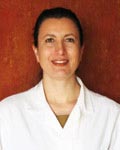
Profa. Dra. Ivana Barbosa Suffredini
Pharmaceuticals, has an MS and Ph.D in Pharmaceutical Sciences, Drug and Medicines area. She is a professor of Pharmacognosy and pharmacobotany the course of Pharmacy and professor of UNIP courses Postgraduate Veterinary Medicine and Dentistry. His emphasis of study is the identification of new drugs with antitumor and antibacterial activity of plant extracts from Amazonian plants and the Atlantic Forest. Heads the Laboratory of Extraction of UNIP since its foundation in 1996, which set up and has been managing its expansion process in order to provide access to students interested in developing scientific activities. Was responsible for transferring the technology required to implement the laboratory extraction, in which the plant extracts are obtained, and the antitumor screening laboratory, in which the extracts are tested against human tumor cells. The technology used is from the National Cancer Institute / National Institutes of Health, the American institution leader in cancer research and global reference center.
Lattes
Email: extractlab@unip.br
Telephones: (11) 3170-3776/3717 e FAX: (11) 3170-3978
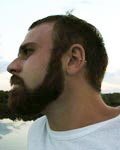
Prof. Dr. Mateus Luis Barradas Paciencia
He is Biologist, Master in Botany from the University of São Paulo (USP) and doctoral student at the Department of Botany of the USP. At UNIP he is curator of the Herbarium at Paulista University, and one of those responsible for studies on diversity of plant communities (trees and ferns) in the Rio Negro forest researchers, developed by the university. He was a founding member of the Dryads Research Institute and Biodiversity Conservation (NGO based in Ilheus, BA, which also participates) and researcher Project RestaUna (www.restauna.org.br), a project that investigated the effects of forest fragmentation on Bahian south over existing biological communities there during the years 1998-2002 Atlantic. Developed studies of fragmentation and communities of terrestrial ferns on community ecology of ferns of Atlantic Southeast (Ribeira Valley) and on development of native trees in the Serra do Mar, the latter performed during the period in which he worked on with Cetesb (1995-1997). Currently, besides Curator of the Herbarium UNIP is also a consultant in the area of environment, conducting botanical surveys for environmental licensing.
Lattes
TECHNICIAN FACULTY
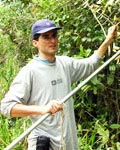
Sergio Alexandre Frana
Pharmacist, graduated from Universidade Paulista - UNIP. In the project, he is responsible for biological tests on tumor cells. He is part of the team that collects botanical material.

Jefferson de Souza Silva
Biomedical, graduated from Universidade Paulista - UNIP. It assists in carrying out experiments in Microbiology and with the insertion of biological data in the Database.
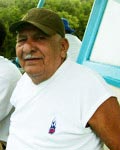
Luiz Fernandes Coelho in memorian
Seu Luiz, as he is known, is one of those people that we like right away, at first glance. Intelligent, wise, good at talking, he represents a kind of icon for the UNIP research group. Today retired, he was an employee of INPA for almost fifty years, where he worked alongside some of the most important botanists in the world and expert connoisseurs of Amazonian flora, such as Sir Ghillean Prance, Dr. William Rodrigues and Dr. Alwyn Gentry. This way, Luiz knows the plants like few others, despite not having graduated from college. He is a "practical botanist". Key part of the studies developed by the group.
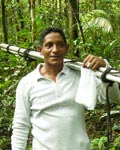
Osmar Barbosa Ferreira
He is a native of Canutama, in the interior of the Amazon. He was a fisherman, hunter, rubber tapper, farmer. The need for self-sufficiency since childhood made Osmar develop some skills that only local people are capable of, such as climbing trees with impressive speed. He works in the UNIP research group as a collector of botanical material and laboratory technician, in Manaus.
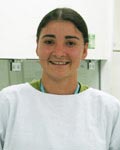
Lucielda Ramos dos Santos
Born in Panelas, PE, she came to São Paulo at the age of 15. Today, she supports projects taking care of cleaning the laboratory and materials, carried out under strict control. She shows an enormous interest in the techniques involved both in cleaning and in the work of colleagues.

Evanete Alves da Cruz
It supports the projects taking care of the cleaning of the laboratory and materials, done under strict control. She is always available to assist students and teachers in whatever is necessary.
DISCENTS
Master's students
- Katia Cristina Pinto
- Keli Cristina Dias Bento
- Sergio Alexandre Frana
- Erika Costa Rudiger
PhD students
- Fátima Cristina Carneiro Marques
- Jefferson de Souza Silva
- Michelle Sanchez Correia Aguiar
- Cinthia dos Santos Alves
Alumni
- Adriana Ligia de Castilho - Master's Degree
- Adriana Lima Achar - Scientific research
- Ana Lúcia Anauati Nicolau
- Ana Paula Kalaf - Scientific research
- Anderson da Cruz Silva - Scientific research
- Andreza Marie Bonate Kostiukoff - Scientific research
- Áurea Márcia Mendes Santos - Scientific research
- Bruna Valério Santana - Scientific research
- Camila Matheus de Assis - Scientific research
- Cláudia Aparecida de Matos - Scientific research
- Daniela Fernandes Gusmão - Master's Degree
- Débora Bentivegna Cesta - Scientific research
- Deusdete Batista de Almeida - Scientific research
- Diogo de Mello Almeida - Scientific research
- Dirce Mimoto Estork - Master's Degree
- Ediane Oliveira Skmirko - Scientific research
- Eliane Margareth Pimenta Carneiro - Scientific research
- Ellen Carolina Montagner Carvasan - Master's Degree
- Erika Ramos Martins
- Humberto Vieira Frias
- Jacqueline Placido Alonso - Scientific research
- Jefferson de Souza Silva - Scientific research
- Joana de Mattos Ozi - Master's Degree
- José Carlos Soto Ribeiro de Assis - Scientific research
- Juliana Paola Correa da Silva - Master's Degree
- Livia Roberta Piedade Camargo
- Karina Emiko Yamamura - Scientific research
- Lucyana Cano Marin - Master's Degree
- Maria de Fátima Salgado Henrique Pelosini - Iniciação Científica
- Maria Valéria Nani Rinaldi - Scientific research
- Mariana Revuelta Hirose - Scientific research
- Marlene Yaeko Mori Nakandakari - Scientific research
- Michele Barnabé - Scientific research
- Natalia Horacio da Silva - Master's Degree
- Patrícia de Souza Viola Costa - Master's Degree
- Paula Andreotti Rodrigues - Master's Degree
- Sinária Rejane Nogaia de Sousa
- Summaia Farah - Scientific research
- Taís Fortes - Doctorate
- Thiago Macrini - Scientific research
- Tiago Morais Dale Caiuby - Scientific research
- William Martinelli - Scientific research
COVENANTS
The UNIP has established an agreement with the Union , specifically with IBAMA - Brazilian Institute of Environment and Renewable Natural Resources in order that the project bioprospecting of novel anticancer drugs and antibiotics could be realized. The Management Board of Genetic Heritage is the institution responsible for providing access to genetic resources to UNIP, and IBAMA, as managing agent of conservation in which UNIP works , is the body responsible for providing the license for collecting the plant material with which the plant extracts are obtained and subsequently tested in vitro biological models.
Recently, an agreement with the Institute of Education and Research of the Syrian -Lebanese Hospital, so the step to elucidate the chemical components of plant extracts are separated and identified was established . Techniques developed chromatography and spectrometry are used to determine the chemical structure of natural products and chromatographic profiles of plant extracts. In addition , research groups established in the IEP / HSL also cooperate with the research group of the Laboratory of extraction so that the plant extracts are tested in other biological models.
LABORATORIES
UNIP Herbarium
In the academic-scientific environment, "herbarium" is a collection of dry plants, properly identified, labeled and stored in appropriate cabinets, useful for recording the collection of a certain plant species at a given place of occurrence. Herbariums are used to ensure that a species was in fact found by a researcher during the development of his research in a given region, in addition to serving as a reference for several scientific studies, since the material from collections made by scientists is kept in specialized institutions.
The UNIP Herbarium has been on the Paulista campus since 1997, having been created shortly after the implantation of the project "Selection, extraction and identification of new antitumor and antibacterial drugs from Brazilian plants", in 1996, coordinated by Dr. Drauzio Varella. From this project, carried out mainly in the Amazon Forest, the need emerged to properly store herborized samples of the plants (ie, "vouchers") that had been collected and used for the production of extracts, in the Extraction Laboratory of UNIP, so that these serve as testimony to the extracts produced. Thus, the scientific collection of plants of UNIP emerged, officially registered as HERBÃRIO UNIP in the Committee of Herbariums of the Botanical Society of Brazil (SBB) in 1999 and, in 2003 in the Index Herbariorum, curated by Biologist Dr. Mateus LuÃs Barradas Paciencia.
With the increase in UNIP's incentive to basic research, other research projects in the field of botany and ecology were added to Dr. Drauzio's initial project and the UNIP Herbarium started to receive botanical material from several locations. Nowadays, it already has about 11,000 numbers in its collection, being one of the main private herbaria in the State of São Paulo. Of these figures, approximately 6,000 refer to Amazonian plants (about 1,500-2,000 different species), which makes the UNIP Herbarium an important reference source for these species, within the State. More information can be found on the New York Botanical Garden - Index Herbariorum website (http://www.nybg.org/bsci/ih/), under the acronym UNIP.
Extraction Laboratory
The idea of researching Amazonian biodiversity occurred in the early 90s, when Dr. Drauzio Varella traveled to the Amazon and noted that, in the stunningly green landscape, tree leaves were completely taken up by fungi, while others remained intact, tender. He realized that there was an enormous scientific potential in the middle of the Amazon vastness and a gap in large-scale research with the aim of identifying scientific instruments that would assist in studies on cancer therapy, infectious diseases and others. In the late 1990s, under the concepts used in similar laboratories of the National Cancer Institute, linked to the National Institutes of Health, in the United States, UNIP's Extraction Laboratory was set up, with the objective of obtaining the largest number of plant extracts from Brazilian plants, in a systematic way, to be subjected to biological and pharmacological tests. Today, the Laboratory has an extract library, or a library of plant extracts, composed of more than 2000 extracts obtained from plants in the Amazon and the Atlantic Forest, which remain stored at - 20 ° C, in cold chambers. Each plant sample is subjected to the extractive process, from which two extracts are obtained, one organic and one aqueous, so that a representative portion of the compounds present in the plant is removed, either in the nonpolar extract, or in the polar extract. The extracts are, in turn, diluted in appropriate solvents and tested in biological models. The active extracts are fractionated and the compound responsible for the activity is isolated, identified and tested in the biological model, so that its biological activity is confirmed and compared with reference substances. One of the main objectives of obtaining and maintaining the extract library is to generate a constant source of samples to be tested in several biological models, preferably developed in vitro, and thus, to optimize the identification of new pharmacological tools to be used in studies of different pathologies.
Microbiology Laboratory
The Microbiology Laboratory was set up to assess the antimicrobial response of plant extracts to microorganisms of importance in human and animal pathologies. Over 1200 extracts were tested against four bacteria, two Gram positive - Staphylococcus aureus and Enterococcus faecalis and two Gram negative - Pseudomonas aeruginosa and Escherichia coli. With the introduction of NPBio in the Graduate Programs in Dentistry and in Environmental and Experimental Pathology, there was an expansion in the number of antimicrobial tests performed and the extracts started to be tested in other bacteria of specific interest to these areas, such as Streptococcus mutans, Streptococcus sanguis, Candida albicans, Prevotella intermedia and Porphyromonas gingivalis, important in periodontal disease and caries. The models used in the tests are validated in order to support the analysis of a high number of samples per week, using a minimum amount of sample.
Antitumor Screening Laboratory
This laboratory was set up with the objective of evaluating the cytotoxic activity against human malignant tumors, grown in vitro, from extracts and other samples. The equipment and supplies for this laboratory are financed by FAPESP. This laboratory was set up according to parameters established at the National Cancer Institute, linked to the National Institutes of Health, in the United States, from where the technology was transferred. Currently, the Laboratory's cell panel contains 7 tumor lines: breast, prostate, lung, colon, central nervous system, leukemia and head-and-neck. Against these 7 cells, more than 1200 extracts have been tested for cytotoxic activity and of these, one hundred and twenty were lethal to 15% or more of the cells in culture, in relation to untreated growth controls. These extracts will be fractionated and tested again in the biological model, as well as evaluated for the composition of the chemical classes present. New cells will be introduced in our panel, referring to malignant tumors of the head and neck, and eventually some of veterinary importance.
EVENTS
- XX Symposium on Medicinal Plants of Brazil. São Paulo, 16 September 19, 2008, the Convention Center Frei Mug
- VIII Scientific Meeting and the Tenth Meeting of the Scientific Initiation, Sao Paulo, 3-5 September UNIP , Indianapolis Campus.
THESIS
Not yet published.
PUBLICATIONS
CONTACT
Telephones: (11) 3170-3776/3717
FAX: (11) 3170-3978
Email: extractlab@unip.br